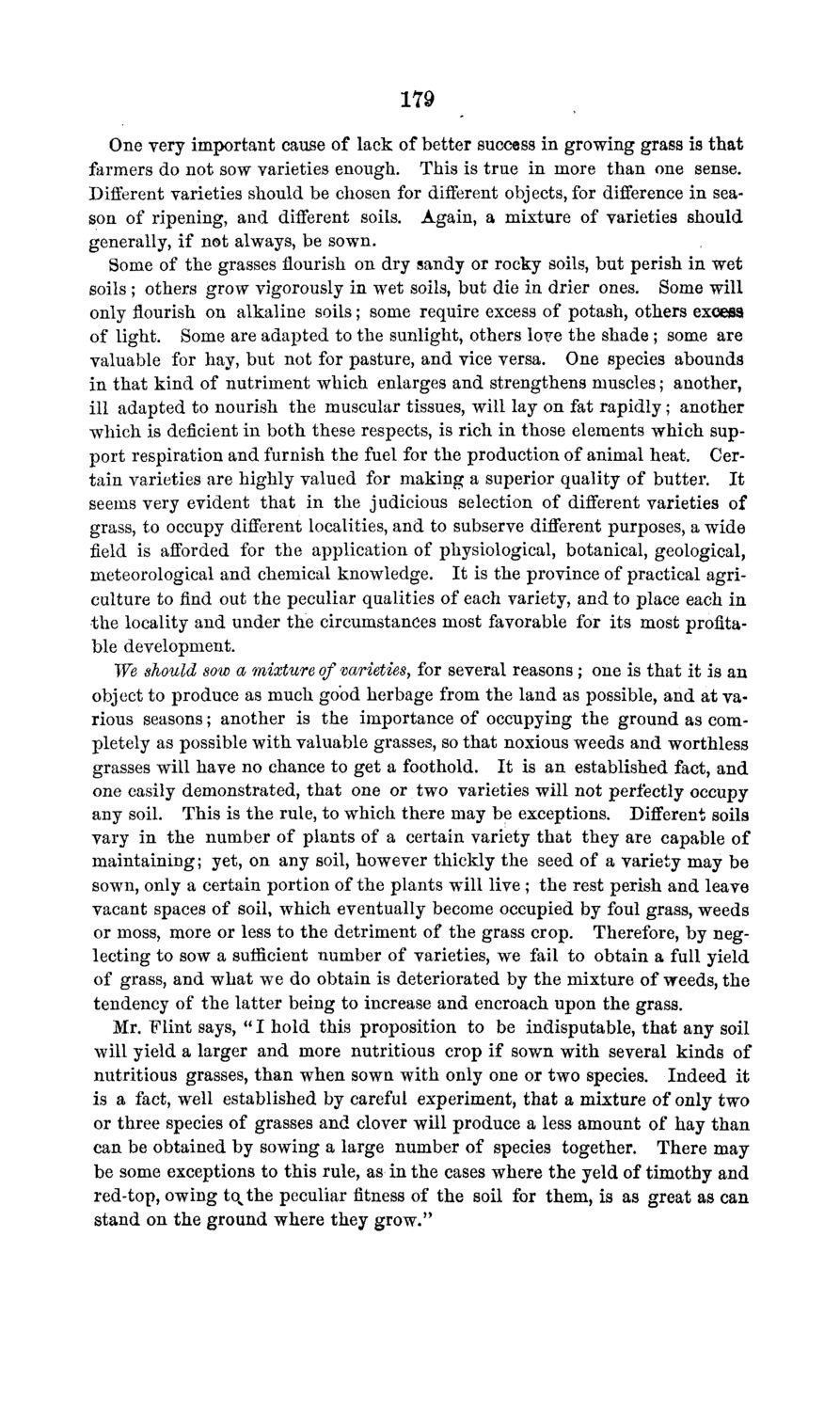| |
| |
Caption: Board of Trustees Minutes - 1869
This is a reduced-resolution page image for fast online browsing.

EXTRACTED TEXT FROM PAGE:
179 One very important cause of lack of better success in growing grass is that farmers do not sow varieties enough. This is true in more than one sense. Different varieties should be chosen for different objects, for difference in season of ripening, and different soils. Again, a mixture of varieties should generally, if n©t always, be sown. Some of the grasses flourish on dry sandy or rocky soils, but perish in wet soils ; others grow vigorously in wet soils, but die in drier ones. Some will only flourish on alkaline soils; some require excess of potash, others exceea of light. Some are adapted to the sunlight, others lore the shade ; some are valuable for hay, but not for pasture, and vice versa. One species abounds in that kind of nutriment which enlarges and strengthens muscles; another, ill adapted to nourish the muscular tissues, will lay on fat rapidly ; another which is deficient in both these respects, is rich in those elements which support respiration and furnish the fuel for the production of animal heat. Certain varieties are highly valued for making a superior quality of butter. It seems very evident that in the judicious selection of different varieties of grass, to occupy different localities, and to subserve different purposes, a wide field is afforded for the application of physiological, botanical, geological, meteorological and chemical knowledge. It is the province of practical agriculture to find out the peculiar qualities of each variety, and to place each in the locality and under the circumstances most favorable for its most profitable development. We should sow a mixture of varieties, for several reasons ; one is that it is an object to produce as much good herbage from the land as possible, and at various seasons; another is the importance of occupying the ground as completely as possible with valuable grasses, so that noxious weeds and worthless grasses will have no chance to get a foothold. It is an established fact, and one easily demonstrated, that one or two varieties will not perfectly occupy any soil. This is the rule, to which there may be exceptions. Different soils vary in the number of plants of a certain variety that they are capable of maintaining; yet, on any soil, however thickly the seed of a variety may be sown, only a certain portion of the plants wTill live ; the rest perish and leave vacant spaces of soil, which eventually become occupied by foul grass, weeds or moss, more or less to the detriment of the grass crop. Therefore, by neglecting to sow a sufficient number of varieties, we fail to obtain a full yield of grass, and what we do obtain is deteriorated by the mixture of weeds, the tendency of the latter being to increase and encroach upon the grass. Mr. Flint says, " I hold this proposition to be indisputable, that any soil will yield a larger and more nutritious crop if sown with several kinds of nutritious grasses, than when sown with only one or two species. Indeed it is a fact, well established by careful experiment, that a mixture of only two or three species of grasses and clover will produce a less amount of hay than can be obtained by sowing a large number of species together. There may be some exceptions to this rule, as in the cases where the yeld of timothy and red-top, owing tovthe peculiar fitness of the soil for them, is as great as can stand on the ground where they grow."
| |